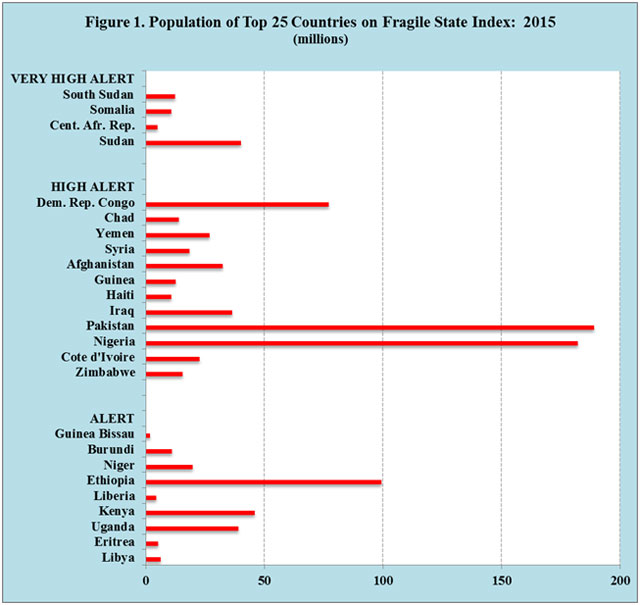by JOSEPH CHAMIE & BARRY MIRKIN
 SOURCE/United Nations Population Division and the Fund for Peace
SOURCE/United Nations Population Division and the Fund for Peace
Regardless of whether they are called fragile, failed, or failing states, scores of countries around the globe are plagued by overwhelming problems with few solutions in sight. Moreover, the instability and dire straits of these countries are spilling across national borders, destabilizing neighboring countries and regions, while posing enormous challenges for international organizations and donors.
While lists of failing states may differ, they include for the most part, the same set of countries. In brief, failing states are unable to provide fundamental societal requirements and basic services to their citizens such as health, education, housing, welfare, employment, security, justice, governance and human rights.
Among the various key factors that can contribute to state failure are poverty, corruption, ineffective governance, crime, violence, forced displacement and sectarian and ethnic conflict. Destabilizing interventions and aggression from abroad are also a part of this toxic mix.
For purposes of this analysis the top 25 states, or the F25 countries, on the 2015 Fragile States Index (FSI) of the Fund for Peace are considered. The index is based on twelve social, economic and political indicators, including demographic pressures, poverty and economic decline, state legitimacy, security, human rights, rule of law, fractionalized elites and external intervention.
Based on their FSI scores, states are grouped into one of twelve categories ranging from Very High Alert to Very Sustainable. Four of the F25 countries – South Sudan, Somalia, Central African Republic and Sudan – are in the Very High Alert category. Twelve of the F25 are in the subsequent High Alert category, including the war-torn countries of Afghanistan, Democratic Republic of Congo, Iraq, Syria and Yemen, and the remaining nine countries are in the Alert category.
Three-fourths of the F25 countries are in Africa, and all except Libya in sub-Saharan Africa. Of the five Asian countries, four of them, namely, Afghanistan, Iraq, Syria and Yemen, are racked by protracted violent armed conflict. The remaining country, Haiti, is the sole failing state in the western hemisphere.
The large majority of the F25 countries – 60 percent – have remained at the highest levels of the FSI for years. For example, Chad, Democratic Republic of Congo, Iraq, Somalia, Sudan and Yemen have been among the top ten highest countries on the index since its inception in 2005.
Population estimates for the F25 countries show considerable variation (Figure 1). More than half of F25 countries have populations under 20 million and nine have populations between 20 and 99 million. By far, the most populous F25 countries are Nigeria and Pakistan at 182 and 189 million, respectively.
Inter Press Service for more
